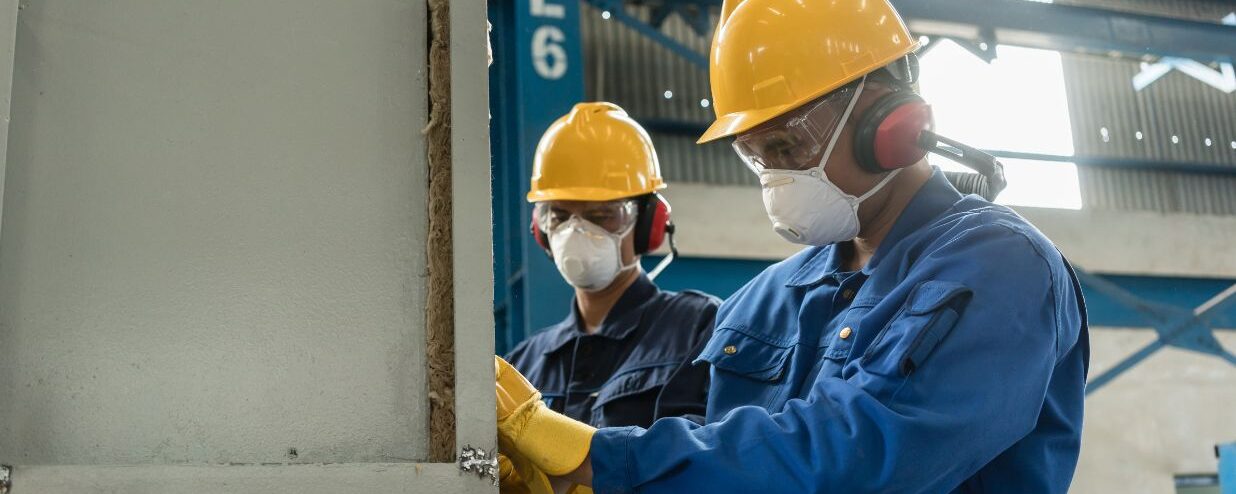Big changes are coming to how foreign workers can live and work in Japan. In 2024, Japan announced plans to replace its current Technical Intern Training Program (TITP) by 2030 with a new foreign workers system called “Employment for Skill Development,” set to launch in 2027. The goal is to better attract and retain overseas talent by creating a more transparent and skill-based framework.
Under the new system, foreign workers who previously entered Japan on a three-year technical intern visa will be transitioned into the Employment for Skill Development system and get funneled into the broader Specified Skilled Worker (SSW) status. This change will allow eligible workers to stay in Japan for up to five years, with the possibility to apply for permanent residency later on.
But this shift also brings new requirements: workers may need to achieve a Japanese level of JLPT N4 or equivalent, and complete mandatory Japanese language training. So what does this mean for future workers and employers in Japan? This guide breaks down how the new system will work, who qualifies, and what steps foreign workers will need to take starting in 2027.
How the current foreign trainee program in Japan is set up

Japan’s current foreign labor system is built around the Technical Intern Training Program (TITP), a program launched in 1993 to help transfer skills to developing countries through on-the-job training in Japan. This is officially different from the Specified Skilled Worker Visa, a working visa introduced in 2019 used to address labor shortages by accepting foreign nationals with specific skills and expertise.
About the Specified Skilled Worker visa
The Specified Skilled Worker visa is divided into two types: Type 1 and Type 2. If you meet the requirements for each, you can stay in Japan for up to five years under Type 2. There will be no limit on visa renewal periods, and you will also be able to bring your family members and apply for permanent residency.
However, this system reform introduces new conditions. To obtain a Specified Skilled Worker visa, workers must demonstrate Japanese language proficiency. Specifically:
- To get the Type 1 visa, you need to pass a Japanese language exam such as the JLPT N4 level.
- To advance to the Type 2 visa, you must have Japanese proficiency at around the JLPT N3 level.
In addition to Japanese language skills, passing a technical test in the relevant field is also required to obtain the visa.
The 18 industries covered by the Specified Skilled Worker visa include:
- Nursing Care: Personal care and daily living assistance
- Building Cleaning: Cleaning inside and outside buildings, sanitation management
- Materials Industry: Manufacturing metal products and machine parts
- Construction: Civil engineering, architecture, electrical work
- Shipbuilding & Marine Industry: Shipbuilding and repair
- Automotive Maintenance: Vehicle inspection, maintenance, and repair
- Aviation: Aircraft maintenance and ground handling
- Accommodation: Hotel and inn customer service, cleaning, and front desk work
- Agriculture: Crop cultivation, harvesting, and shipping
- Fisheries: Fishing, aquaculture, and seafood processing
- Food & Beverage Manufacturing: Food production, processing, and packaging
- Food Service: Cooking and serving customers at restaurants
About the Technical Intern Training Program
Originally, the TITP is meant to transfer technology and skills to developing countries by having individuals from those countries train in Japan, or as a form of international cooperation. But over time, TITP has also become a major way to address labor shortages in sectors such as manufacturing, agriculture, construction, and nursing care.
The TITP still grew to be a popular program. As of June 2024, around 360,000 trainees — or “technical interns” — were participating in the program, according to government data. Most trainees come from countries like Vietnam, Cambodia, Indonesia, the Philippines, and Myanmar.
However, the TITP has drawn increasing criticism, both inside and outside Japan. Many say the program is less about training and more about securing cheap labor. Cases of long working hours, wage violations, restricted job mobility, and abuse have been widely reported. In fact, in 2023 alone, nearly 10,000 foreign trainees went missing from their workplaces.
To address these issues, Japan’s parliament approved a new system in June 2024. The upcoming program, set to launch in April 2027, is structured to give better career pathways and allows trainees to switch jobs under certain conditions.
What to know about Japan’s new “Employment for Skill Development” system
Instead of entering Japan through the TITP, foreign workers will come to Japan through the Employment for Skill Development (ESD) route from 2027. Under this system, foreign nationals will enter as unskilled laborers and undergo a structured three-year training program designed to help them meet the requirements for the Specified Skilled Worker Type 1 residency status.
In other words, the Technical Intern Training Program (TITP) will be merged into the Specified Skilled Worker (SSW) visa system through the new Employment for Skill Development (ESD) route.
There are a few key things to know about Japan’s new training employment system.
1. Learning Japanese becomes mandatory and standardized
One of the most significant changes in Japan’s new foreign worker system is the requirement for Japanese language proficiency.
Under the current Technical Intern Training Program, there is no standardized language test requirement — such as the JLPT — to enter.
Language training was largely left to sending organizations in the worker’s home country, and the quality and length of training varied greatly. As a result, many trainees arrived in Japan with little to no Japanese ability, making it difficult to adjust, communicate, or seek help when needed.
With the new Employment for Skill Development (ESD) system, Japanese language learning is mandatory and standardized.
To qualify for most Specified Skilled Worker, or tokutei ginou (特定技能) visas, applicants must now:
- Pass a skill-based test in their industry
- Achieve at least JLPT N5 or an equivalent Japanese test (JFT-Basic). This applies to key industries like caregiving, hospitality, food services, agriculture, and construction.
Find below the specific language qualifications for the visas:
| Visa Type / Category | Required Japanese Level | Duration & Conditions |
|---|---|---|
| Technical Intern (育成就労) | A1 (JLPT N5) | 3 years (no job change allowed) |
| Specified Skilled Worker Type 1 (特定技能1号) | A2 (JLPT N4) | Up to 5 years (job changes allowed) |
| Specified Skilled Worker Type 2 (特定技能2号) | B2 (JLPT N3) | Unlimited / Family accompaniment allowed |
In addition, trainees will be required to complete a formal Japanese language training program either before arriving in Japan or during their stay.
Top schools like Coto Academy offer structured, JLPT-focused Japanese language classes that may help you meet this requirement. The school has campuses in Tokyo, Yokohama, and an online school that lets you learn Japanese from anywhere in the world. If you are interested, fill out the contact form below and get in touch with our team for a personalized lesson plan.
2. Tighter control over foreign labor intake
The Japanese government is shifting away from its past approach of accepting unskilled foreign labor with minimal structure.
Under the new framework, foreign nationals who would have previously entered Japan as unskilled interns will now undergo three years of structured training through the Employment for Skill Development (ESD) system.
One key change is the requirement for structured training and language acquisition. Employers will be responsible for providing at least 100 hours of Japanese language education during the initial training period—and must finance this as part of their onboarding process.
Support organizations such as the Japan International Trainee & Skilled Worker Cooperation Organization (JITCO), a public-interest foundation involved in both TITP and the Specified Skilled Worker (SSW) programs, are currently involved in setting standards. JITCO is reportedly discussing making the 100-hour Japanese education requirement mandatory.
3. Switching jobs becomes easier
Another key feature of the new system is that foreign workers will be allowed to change their place of employment if they meet certain conditions, including job transfers in the same industry sector. This arrangement is aimed at creating a more comfortable working environment for them.
Under the current technical intern training system, trainees are prohibited from switching their workplaces in principle, a rule cited as one of the reasons for the disappearance of trainees unable to bear the working environment of their employers.
4. More sectors are now covered by the SSW I Visa
As of March 29, 2024, Japan officially expanded the Specified Skilled Worker (SSW) visa program by adding four new sectors: automotive transportation, railways, forestry, and the timber industry. This brings the total of industry covered by the SSW I visa to 16 sectors
In 2025, the government is considering further expansion to include three additional sectors: logistics/warehouse management, linen supply, and resource recycling/waste treatment. This would bring the total to 19 sectors.
5. Japan is encouraging long-term integration over a quick solution
The Technical Intern Training Program (TITP) was never intended to help foreign workers settle in Japan long-term. Its main goal was skill transfer to developing countries. Interns were supposed to return home after 3–5 years, and there was no clear path to permanent residency or long-term stay.
One of the key goals of Japan’s new Employment for Skill Development (ESD) system is to promote long-term integration of foreign workers, not just temporary labor. Workers who begin under the ESD system can upgrade to the Specified Skilled Worker (SSW) Type 1 visa, and eventually to SSW Type 2, which offers longer stays, family accompaniment, and eligibility for PR. This shift reflects a broader government goal: to encourage long-term settlement, not just short-term labor.
What about other visas?

While this policy change mainly targets workers under the current technical trainees — typically in blue-collar sectors — the impact extends further. Even in industries where Japanese isn’t legally required (such as English teaching or some IT roles), employers are increasingly favoring candidates with JLPT N3 or N2 proficiency.
The reason? Better communication, smoother team integration, and stronger long-term retention.
Why learning Japanese before coming to Japan matters more than ever
With the new foreign workers system, learning Japanese before coming to Japan is more important than ever. Achieving around JLPT N5 to N4 has become mandatory for foreign workers even before they come to Japan.
For reference, the JLPT N4 generally requires around 300 to 400 hours of focused Japanese study for most learners starting from zero or beginner level. This means consistent study over several months (e.g., 1–2 hours daily for 6–9 months) is often needed to reach the level required under Japan’s new foreign worker system.
If you’re planning to move to Japan or are already here and looking to build a stable future, consider learning Japanese at one of the top-rated Japanese language schools in Tokyo, like Coto Academy.
The school’s native teachers, personalized curriculum, and strong support for foreign workers not only help you meet the language requirements set by Japanese immigration policies, but also prepare you for a confident and successful start to your new life in Japan. Their JLPT course, for example, boasts a 35% higher passing rate than the national average. Contact us below if you are interested in taking Japanese lessons.
Is there a 150-hour Japanese language education requirement?
If you’re planning to come to Japan, you may have heard rumors that 150 hours of Japanese language study is now a requirement — especially for foreign workers. So, is it true?
As of now, there is no official Japanese government rule requiring 150 hours of Japanese language education for foreign workers under the Technical Intern Training Program (TITP) or Specified Skilled Worker (SSW) visa categories.
However, there is a new requirement being introduced in April 2025 for those applying for student visas to attend Japanese language schools. Applicants will need to provide proof of at least 150 hours of Japanese language study, or pass a test equivalent to JLPT N5 level.
This rule is meant to ensure students are better prepared before arriving — but again, it only applies to student visas, not work visas.
Get ahead and learn Japanese with Coto Academy!
Japan’s new foreign worker visa system brings greater opportunities for long-term stay and even permanent residency, but it also comes with stricter language requirements. That’s why learning Japanese is more essential than ever.
If you’re thinking about working in Japan, we recommend studying at trusted and top-rated Japanese language schools like Coto Academy. Coto offers intensive and part-time Japanese classes in Tokyo, Yokohama, and online, so you can start learning even before you arrive in Japan.
Our JLPT-aligned, structured programs are designed specifically for working professionals, with flexible study plans tailored to different needs and levels. Here’s why Coto Academy stands out from other Japanese language schools:
- 25+ years of teaching Japanese to adults and professionals
- 35% higher JLPT passing rate compared to the national average
- Personalized curriculum, native Japanese teachers, and strong support for the foreign and expat community
Fill out the inquiry form below to learn more about our Japanese language programs, get a free level check, and see how we can support your journey in Japan.
Top Rated School In Japan
Hear from our students
FAQ
What will the Technical Intern Training Program (TITP) be replaced with?
Japan’s Technical Intern Training Program (TITP) will be officially phased out in 2027 and replaced by the Employment for Skill Development (ESD) system. This new framework aims to eliminate labor exploitation, improve job mobility, and create a clear pathway for foreign workers to gain skills and transition to longer-term residency.
What is Japan’s new Employment for Skill Development (ESD) system?
The Employment for Skill Development (ESD) system is Japan’s new government-backed initiative to train and integrate foreign workers. It combines language training, job skill development, and a structured transition to the Specified Skilled Worker (SSW) visa. Under this system, foreign workers will enter as trainees and, after three years, can qualify for a more stable and rights-protected visa status.
How will the foreign worker visa change in Japan in 2027?
Starting in 2027, foreign workers who would previously enter Japan under the technical intern training program will instead enter under a new foreign worker training system, which requires language education training and structured skill training for up to three years so they can qualify for the Specified Skilled Worker Type 1 visa.
What will be the Japanese language requirements for foreign workers?
Under the new system, Japanese language proficiency will be standardized and mandatory for most foreign workers. Applicants must pass at least JLPT N4 or its equivalent (e.g., JFT-Basic) to qualify for the SSW visa. In many industries, basic conversational Japanese is also expected due to workplace integration goals. Formal language training is required either before or during their stay in Japan.
What is the difference between Technical Intern Training Program and Specified Skill Visa in Japan?
The Technical Intern Training Program focuses on short-term skill transfer with limited rights and no language requirement, while the Specified Skilled Worker visa offers longer stays, job mobility, mandatory Japanese proficiency, and a path to permanent residency.
It's said that you can't work in Japan unless you're fluent in Japanese. Is that true?
Under the new Employment for Skill Development (ESD) program starting in 2024, foreign workers will need to have CEFR A1 level-equivalent (JLPT N5) for Specified Skilled Worker Type 1, and B2 level (JLPT N3) for Specified Skilled Worker Type 2. So, having a certain level of Japanese ability is mandatory.
Can you work in Japan even if you don’t speak Japanese?
Even if you don’t speak Japanese at all, you can enter under the ESD system and receive up to 3 years of training while working, during which you learn the required Japanese. However, even at this stage, a minimum Japanese level of CEFR A1-level (JLPT N5) is required.
What do you need to get a Specified Skilled Worker visa?
To get a Specified Skilled Worker visa, you need:
- Proof of Japanese language ability (JLPT N4 or above for Type 1, JLPT N3 or above for Type 2)
- Passing a technical skills test in the relevant industry
From 2027, foreign workers will move from the ESD program to the Specified Skilled Worker system.
How important is it to pass JLPT N4?
Passing JLPT N4 is a key requirement to obtain the Specified Skilled Worker Type 1 visa. Without it, you cannot move on to Type 1 status and work in Japan for up to five years. So, obtaining N4 is very important.
Is an academic background required for the Specified Skilled Worker visa?
There is no mention of any academic background requirement for this visa. What matters most are Japanese language ability and passing the technical skills test, rather than formal education.












